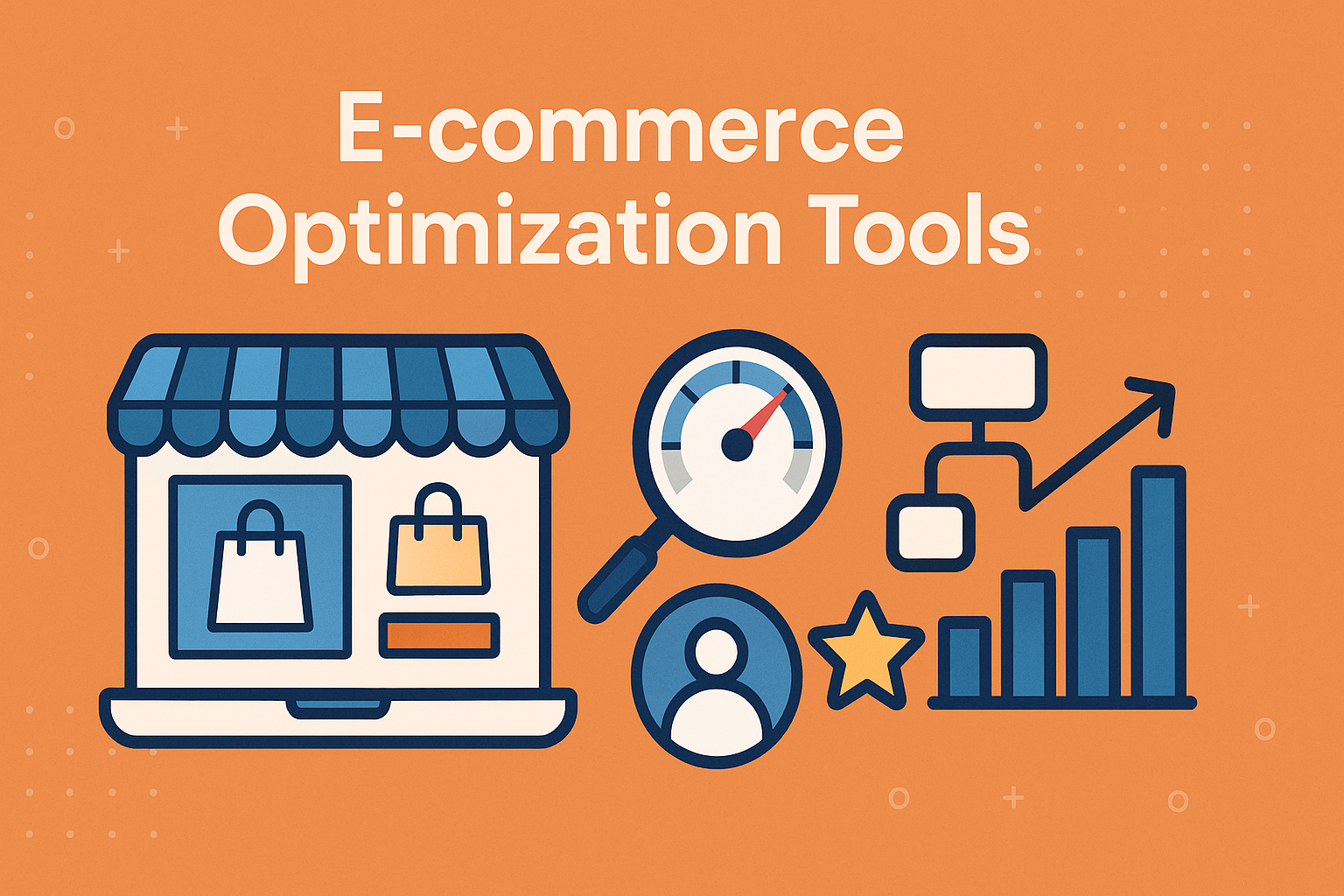In the ever-evolving world of online retail, simply launching an e-commerce store is no longer enough. With intense competition and rising customer expectations, optimizing every element of the buying journey is crucial. That’s where e-commerce optimization tools come in — helping you increase conversions, improve user experience, and boost revenue.
Whether you’re running a Shopify store, a WooCommerce site, or a custom e-commerce platform, optimization tools give you the data, insights, and automation you need to streamline operations and maximize profits.
Why E-commerce Optimization Matters
Every click, scroll, and interaction on your online store impacts your bottom line. A slow-loading page can drive customers away. A poorly placed CTA (Call to Action) might reduce conversions. An unclear checkout process could increase cart abandonment.
Optimization is about identifying and eliminating these friction points — and enhancing what already works. By leveraging the right tools, you can:
- Improve conversion rates (CRO)
- Reduce cart abandonment
- Enhance user experience (UX)
- Personalize the customer journey
- Drive repeat purchases
Let’s explore the most valuable types of tools and some of the top performers in each category.
1. Conversion Rate Optimization (CRO) Tools
CRO tools help you understand what visitors are doing on your website — and how to encourage them to take action.
Recommended Tools:
Hotjar – This user behavior analytics tool offers heatmaps, session recordings, and surveys. It’s perfect for understanding how users interact with your site and where they drop off.
Optimizely – A leading A/B testing platform, Optimizely lets you test different versions of your product pages, CTAs, or checkouts to see what drives the best results.
Google Optimize (sunset in 2023 but often replaced by tools like VWO or Convert) – Free and integrated with Google Analytics, it allowed small businesses to run simple split tests and improve performance.
2. Site Speed & Performance Tools
Slow websites kill conversions. Every second of delay can significantly impact sales.
Recommended Tools:
Google PageSpeed Insights – Free and easy to use, this tool analyzes your site’s loading speed on mobile and desktop and offers improvement suggestions.
GTmetrix – Provides detailed performance metrics and actionable tips to improve speed, such as image compression, caching, and script optimization.
Cloudflare – A CDN (Content Delivery Network) and security tool that helps reduce load times and protect against threats like bots or DDoS attacks.
3. Personalization & Recommendation Engines
Personalized shopping experiences increase average order value (AOV) and customer loyalty.
Recommended Tools:
Dynamic Yield – An enterprise-grade platform that enables real-time personalization across product recommendations, emails, and promotions.
Nosto – Designed for e-commerce, Nosto uses AI to create dynamic shopping experiences based on customer behavior.
Shopify Product Recommendations (built-in) – For Shopify users, this tool provides intelligent product suggestions without third-party integrations.
4. SEO & On-site Optimization Tools
Getting traffic to your site is only half the battle. These tools ensure that your pages are optimized to rank well and convert visitors into customers.
Recommended Tools:
Ahrefs / SEMrush – Powerful SEO tools for tracking keywords, analyzing competitors, and improving your site’s content and link-building strategies.
Yoast SEO (for WordPress) – Helps optimize on-page SEO elements like meta tags, slugs, and readability for WooCommerce stores.
SurferSEO – Combines content creation and optimization, giving guidelines on keyword density, structure, and NLP entities based on top-ranking competitors.
5. Cart Abandonment & Email Automation Tools
About 70% of shoppers abandon their carts — but not all is lost. The right tools can bring them back.
Recommended Tools:
Klaviyo – A popular email marketing tool tailored for e-commerce. It automates cart abandonment flows, welcome sequences, and personalized product follow-ups.
CartStack – Tracks abandoned carts and sends timely recovery emails and push notifications to bring shoppers back.
Rejoiner – Ideal for mid- to large-sized stores, offering advanced cart recovery and customer lifecycle marketing features.
6. Analytics & Funnel Tracking Tools
Understanding your customer journey — from ad click to final purchase — is essential for optimization.
Recommended Tools:
Google Analytics 4 (GA4) – The gold standard in e-commerce tracking. GA4 lets you build custom funnels, track events, and understand user behavior across devices.
Mixpanel – More advanced behavioral analytics, helping you track actions over time and build cohort analyses.
Heap – Automatically captures every user interaction without manual tracking, allowing for rapid insight generation without needing developers.
7. User Feedback & Surveys
Sometimes, the best way to understand what’s not working is to ask your users directly.
Recommended Tools:
Typeform – A sleek tool for building interactive surveys and feedback forms. Great for collecting input post-purchase or during checkout.
Qualaroo – Offers website pop-up surveys targeted by behavior or device type, letting you get feedback in the moment.
UsabilityHub – Allows you to test visual elements like product photos, headlines, or page layouts before deploying them live.
Final Thoughts
E-commerce optimization isn’t a one-time project — it’s a continuous process. As customer preferences shift, technology evolves, and competitors adapt, so must your online store. The good news is that with the right tools, much of the heavy lifting is automated or data-driven.
Start by identifying your store’s weak spots — be it slow performance, high abandonment rates, or lack of personalization — and select the tools that address those areas. Test, refine, and iterate. Over time, these incremental improvements can add up to major revenue growth and a significantly better shopping experience for your customers.


